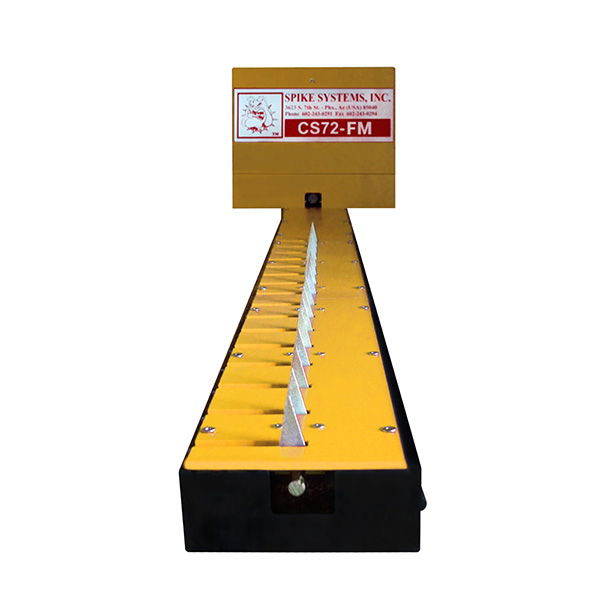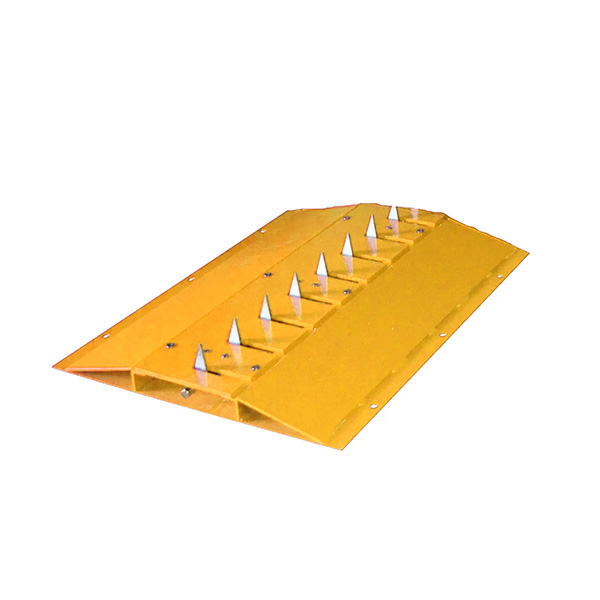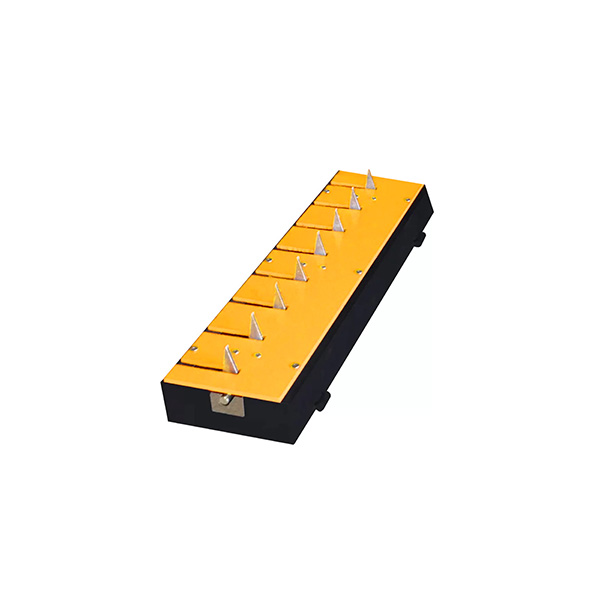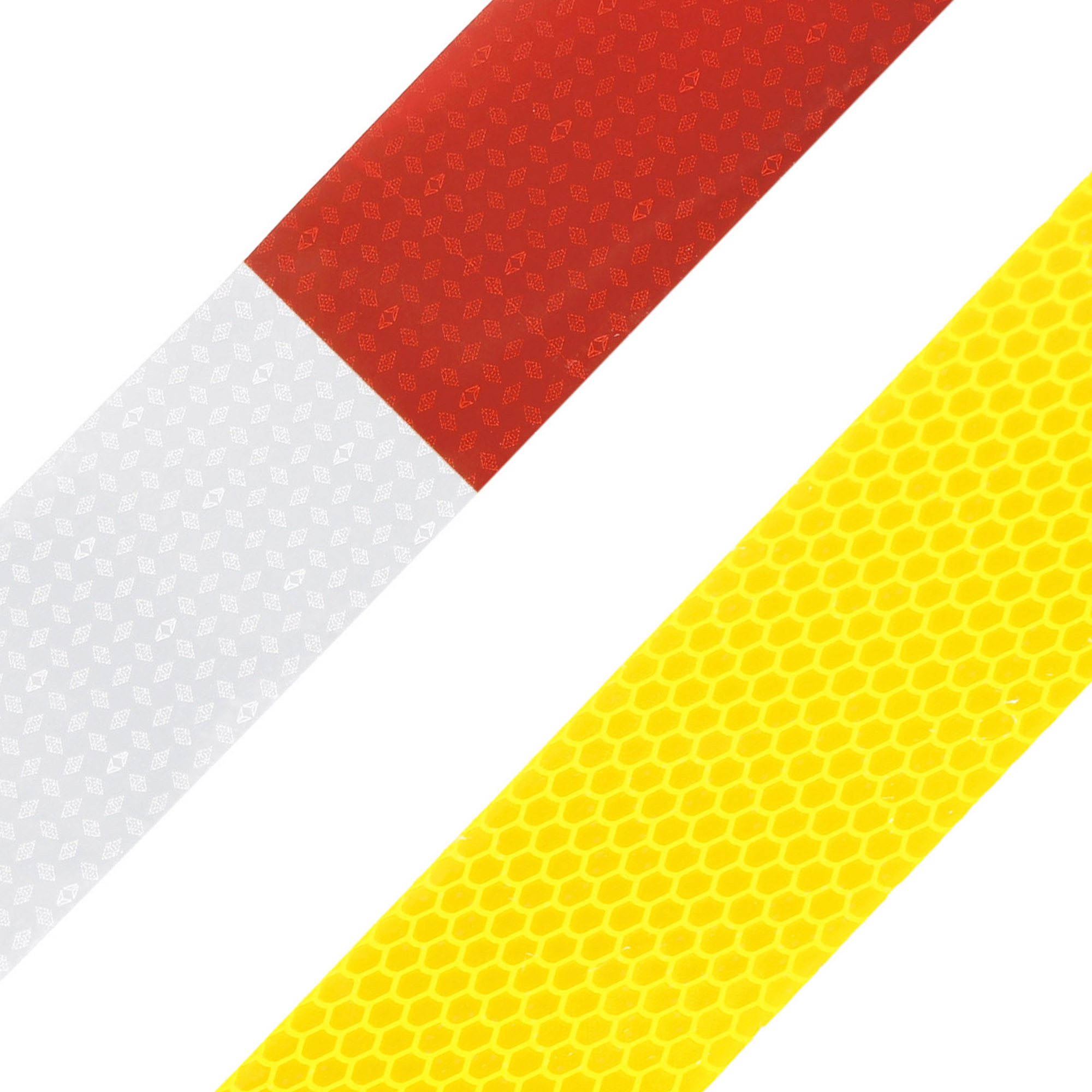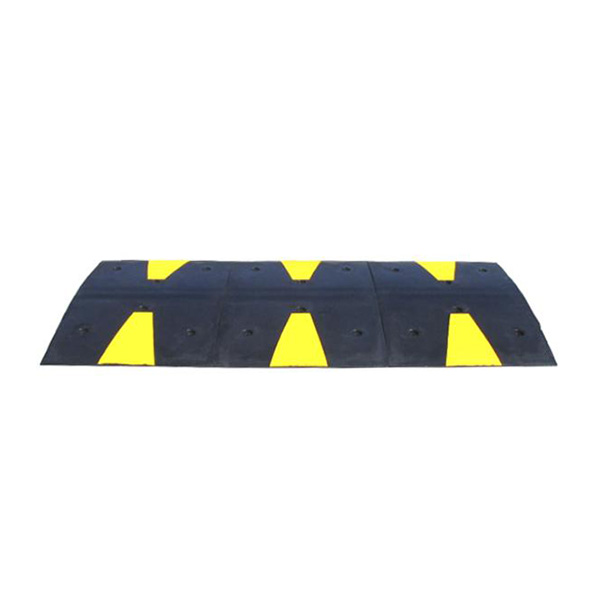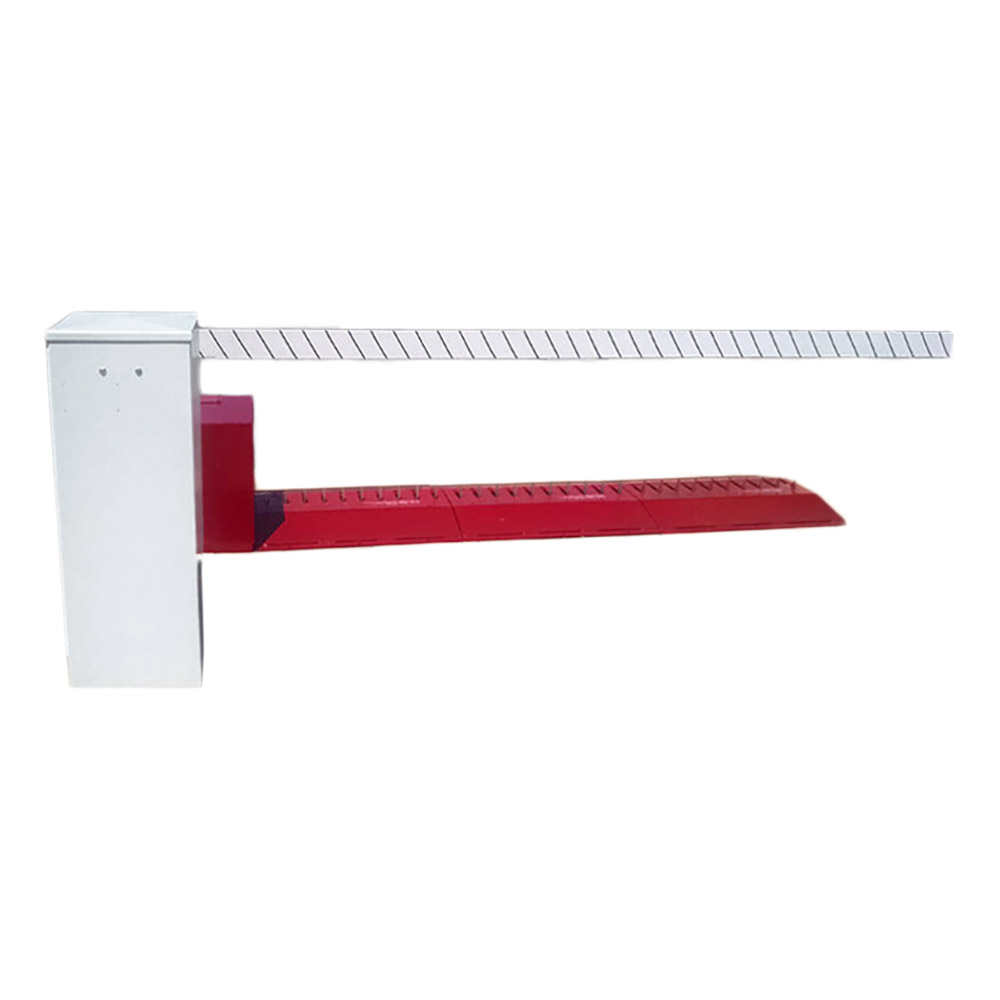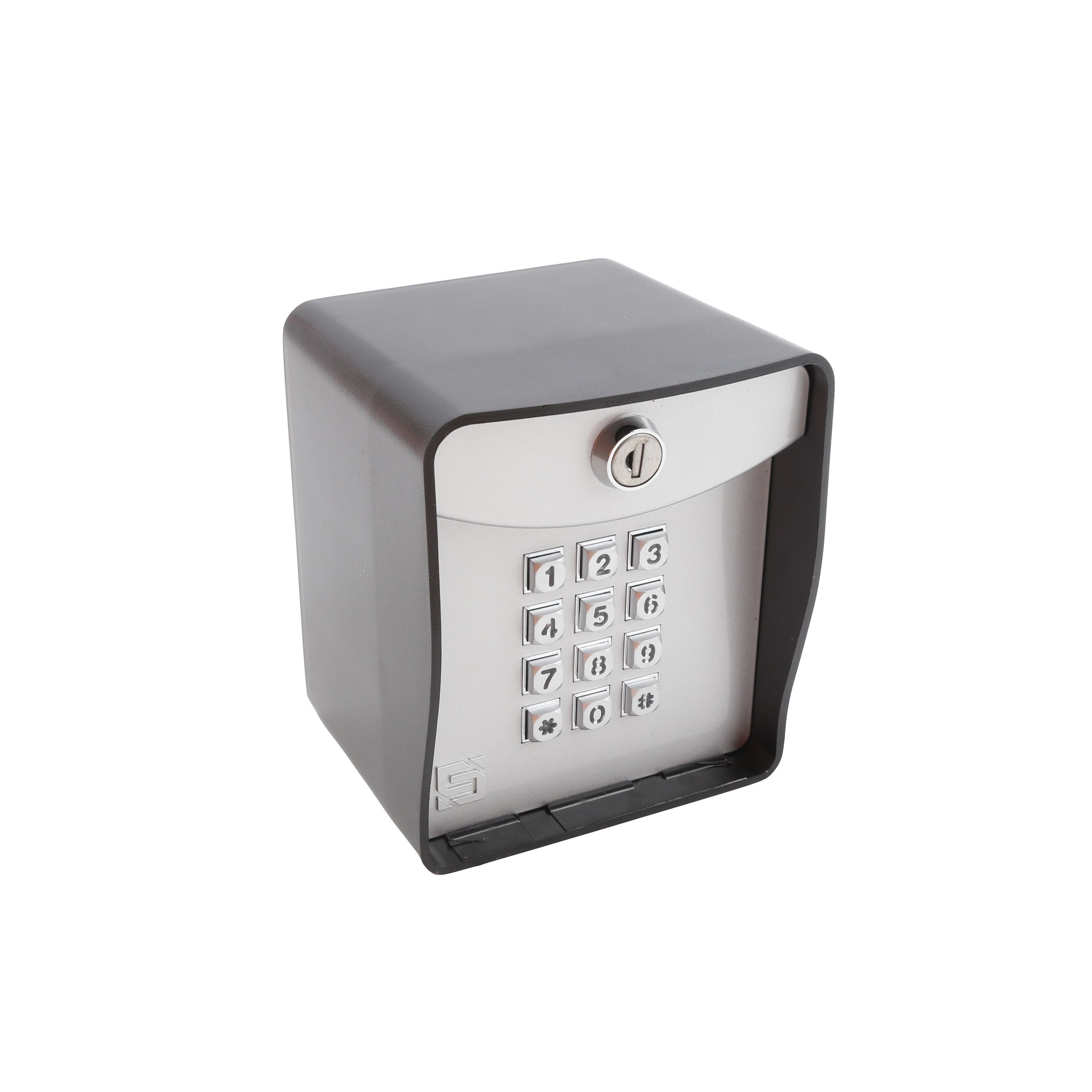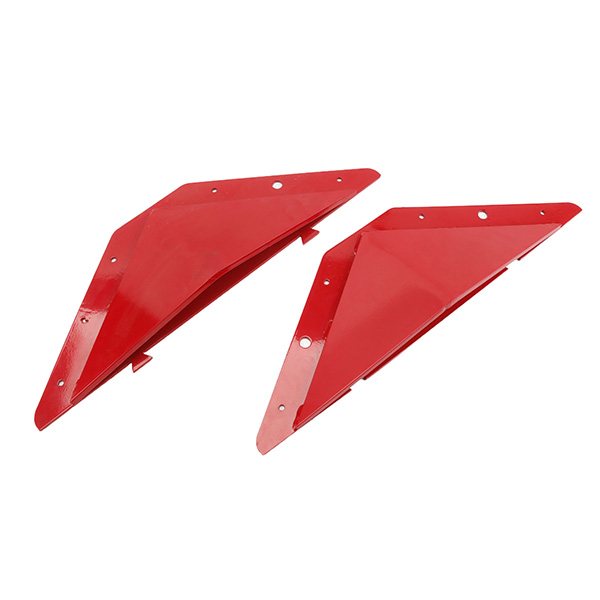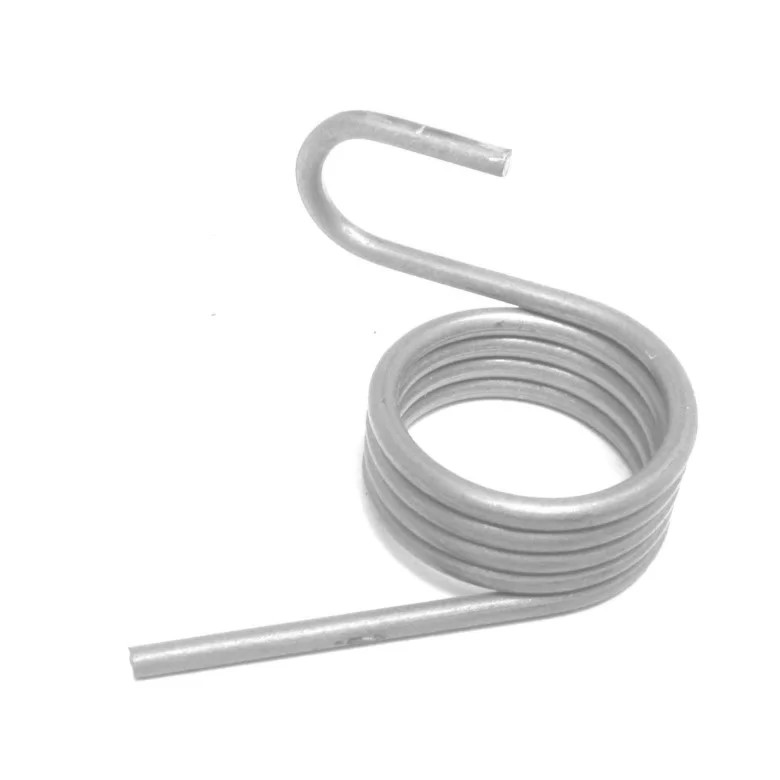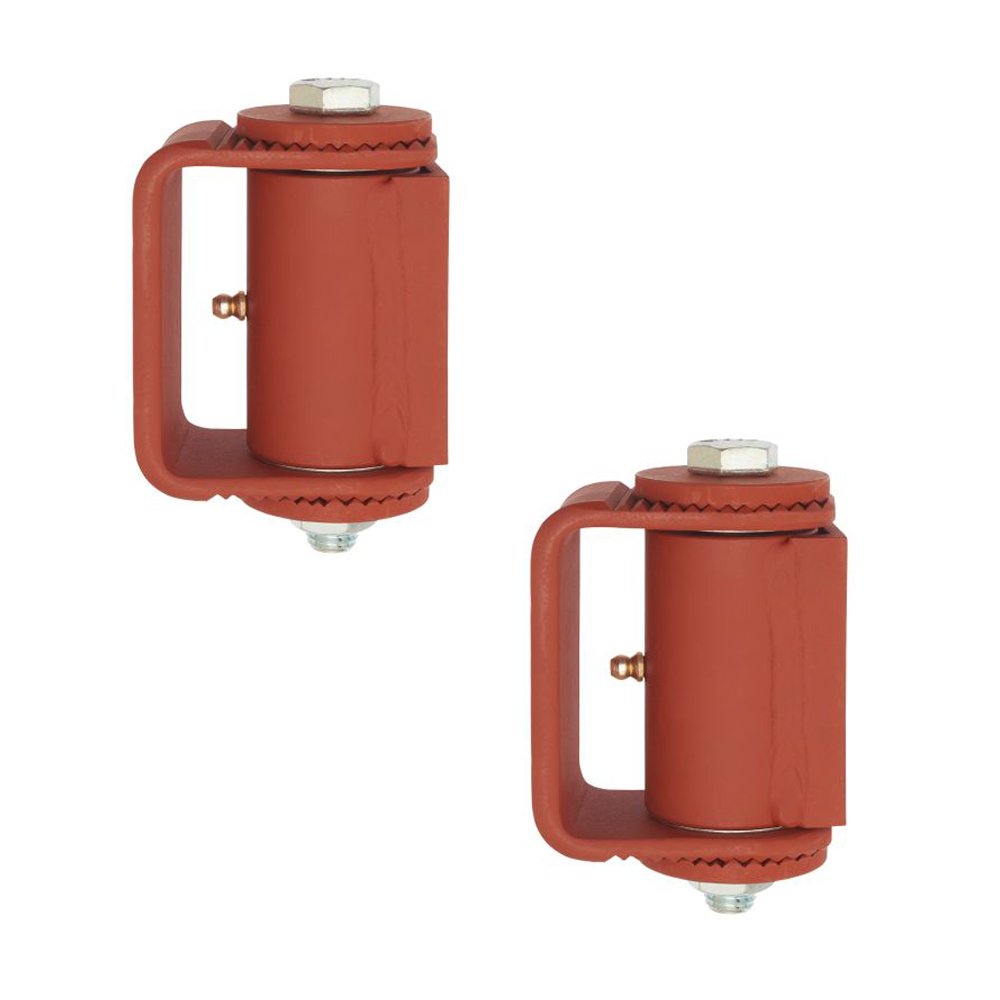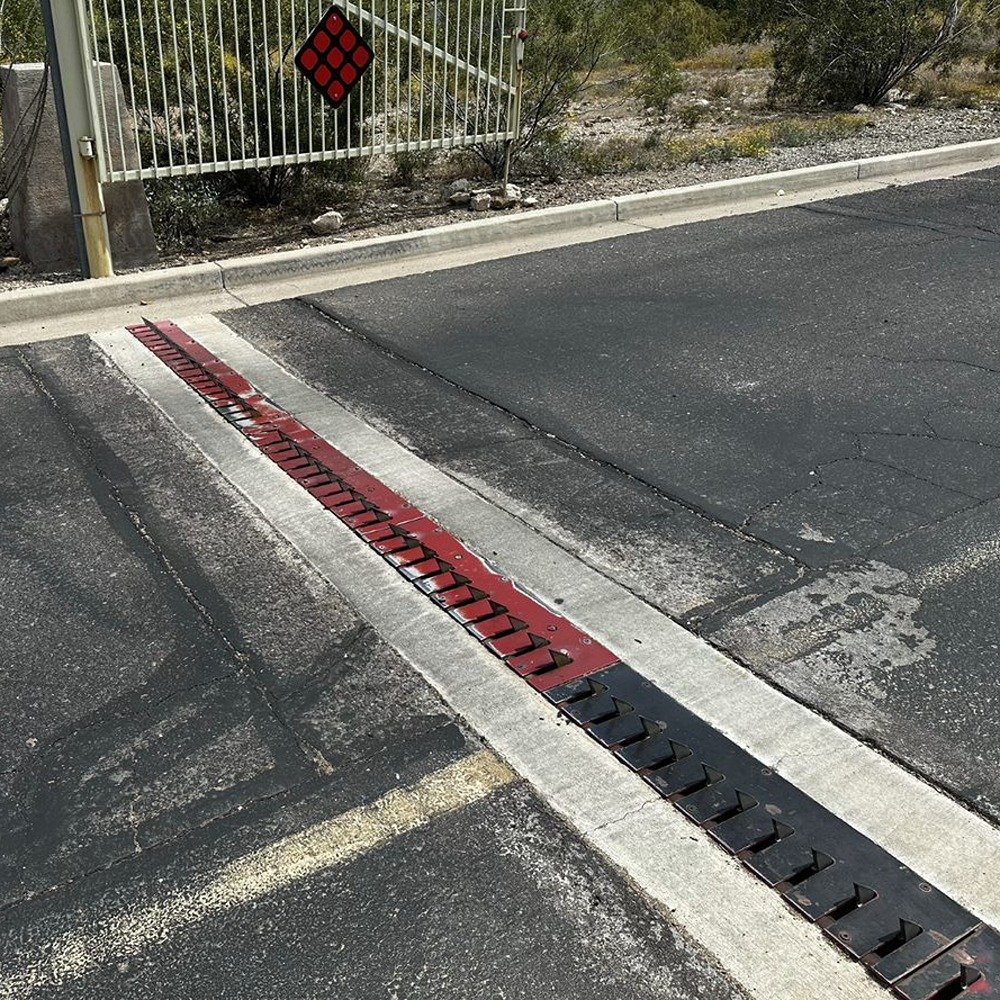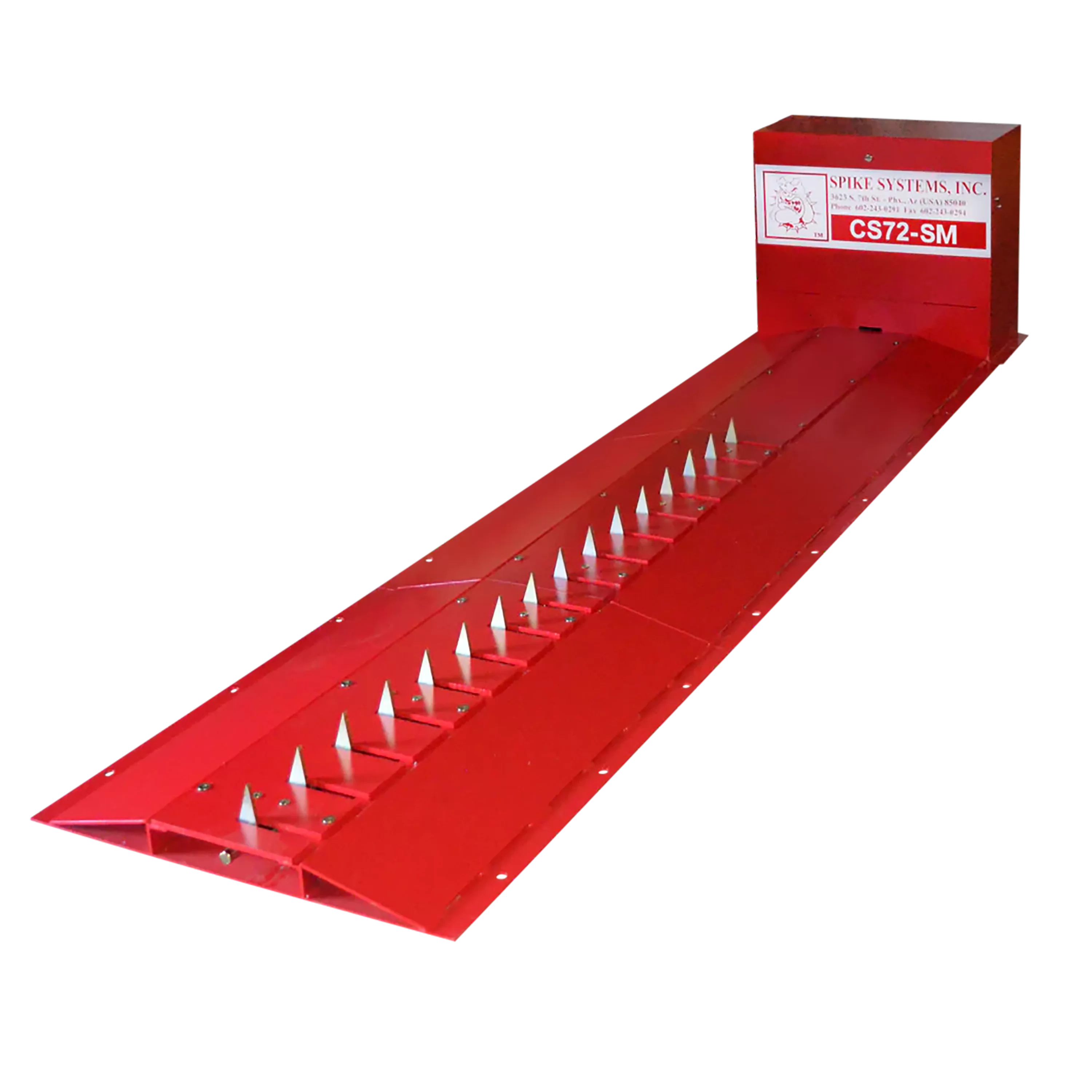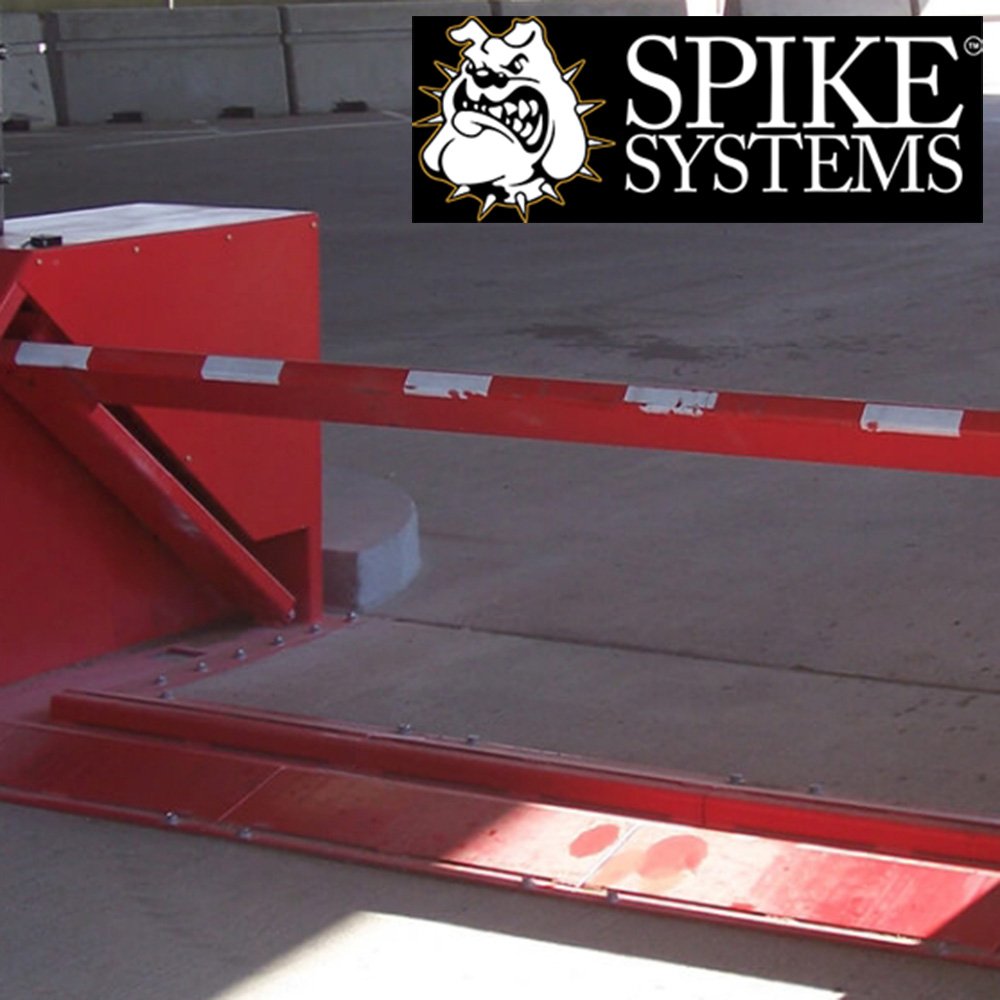Parking Lot Entrance Traffic Spikes
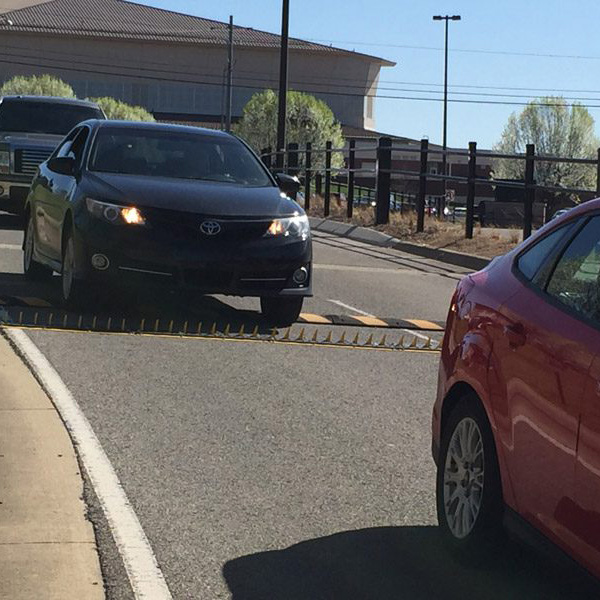
Traffic spike systems are a reliable solution for controlling vehicular access and maintaining secure traffic management in parking lots and other busy areas. Strategically installed at entry and exit points, these systems regulate vehicle flow by allowing passage in one direction while actively deterring unauthorized movement in the opposite direction. By physically preventing improper access, traffic spikes enhance perimeter security, protect private property, and ensure smooth and orderly traffic flow.
Designed for both functionality and durability, traffic spike systems are built to endure heavy usage and varying environmental conditions. When vehicles travel in the approved direction, the spikes retract smoothly beneath the tires, enabling safe passage. Conversely, any attempt to enter through a restricted direction keeps the spikes engaged, puncturing tires to immobilize the vehicle and prevent further movement. This blend of security and convenience makes traffic spike systems an ideal choice for effectively managing access at parking lot entrances and other high-traffic locations.
How Do Traffic Spikes Work?
Traffic spikes operate through a mechanical design that ensures directional control of vehicle movement. The system typically consists of a housing unit, spike assembly, and a spring-loaded or hinged mechanism. The spikes themselves are made of high-strength metal, designed to withstand the weight of passing vehicles and resist wear from repeated use. These spikes are mounted on pivot points or axles within the housing, allowing them to rotate or tilt depending on the direction of the vehicle.
When a vehicle approaches from the authorized direction, the forward movement of the tires exerts pressure on the spikes. This pressure causes the spikes to rotate downward into the housing, exposing their smooth, flat side to the tires. Once the vehicle passes, the spring or counterweight mechanism resets the spikes to their upright position, ready to restrict reverse movement.
If a vehicle approaches from the restricted direction, the spikes remain upright, exposing their sharp edge. Attempting to drive over the spikes in this direction forces the tire onto the pointed side, which punctures the tire and prevents further movement. Some systems also include safety features, such as dampeners to control the speed at which the spikes reset, ensuring they don't damage vehicles moving in the correct direction. This clever use of basic mechanics creates a reliable, durable, and efficient way to manage vehicular access.
Types of Traffic Spikes
Manual Traffic Spikes
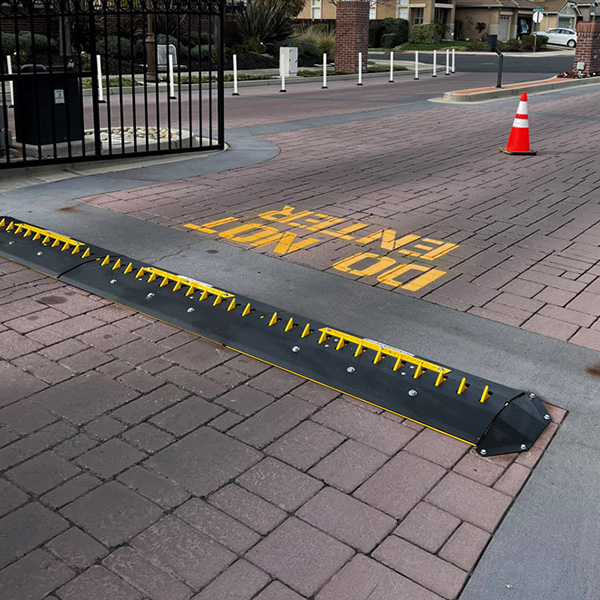
Manual traffic spikes are a reliable solution for directional traffic control, designed with the previously mentioned spring-loaded or hinged mechanism that allows spikes to retract when vehicles move in the approved direction and remain upright to prevent reverse movement. These spikes are available in two installation types: surface-mounted units, which are easy to install and ideal for temporary or above-ground use, and in-ground units, which are recessed for a flush, durable finish. They are offered in various load ratings to accommodate vehicles ranging from standard cars to heavy-duty trucks, and can be customized in length, width, and finish—such as galvanized or powder-coated steel—for specific applications and environments. Accessories like end bevels are also available to improve safety and ensure smooth vehicle transitions, making manual traffic spikes a versatile and effective access control solution.
Motorized Traffic Control Systems
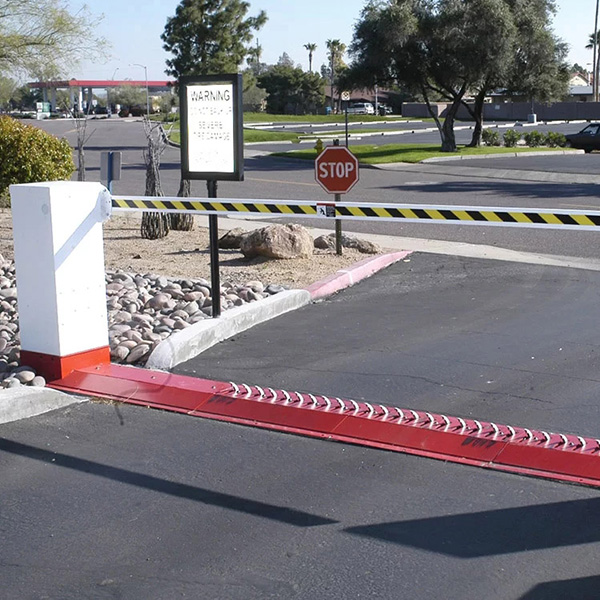
Motorized traffic spikes offer an advanced solution for controlling vehicular access, utilizing an automated mechanism to raise and lower the spikes as needed. Operated through electrical or hydraulic systems, these spikes integrate seamlessly with access control technologies such as barrier gates, keypads, or sensors, allowing for remote or automated control. Like their manual counterparts, motorized traffic spikes are available in surface-mounted and in-ground options, with various load ratings, lengths, widths, and finishes to suit different applications. Optional accessories, such as end bevels and warning lights, enhance safety and visibility, making them suitable for high-security facilities, parking garages, and other critical areas.
Installation Options for Traffic Spikes
Surface-Mounted Traffic Spikes
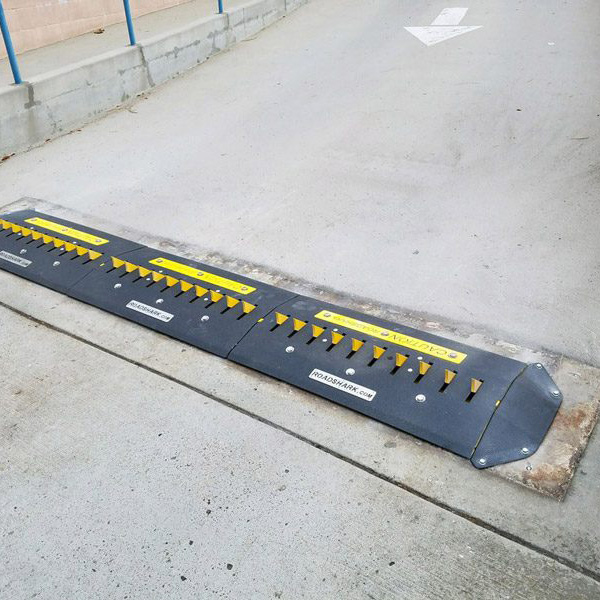
Surface-mounted traffic spikes are designed for quick and straightforward installation, as they are anchored directly to the road or pavement surface without requiring excavation. Their raised profile not only houses the spikes but also doubles as an effective speed bump, encouraging vehicles to reduce speed when approaching access points. These systems are ideal for environments where permanent installation is not feasible or where flexibility and ease of relocation are priorities, such as temporary event venues, parking lots, or construction sites. To ensure safety and reduce wear on vehicles, surface-mounted spikes often come with optional accessories like end caps or beveled edges. Clear signage and proper placement are essential to maximize safety and effectiveness, especially in high-traffic areas.
In-Ground Traffic Spikes
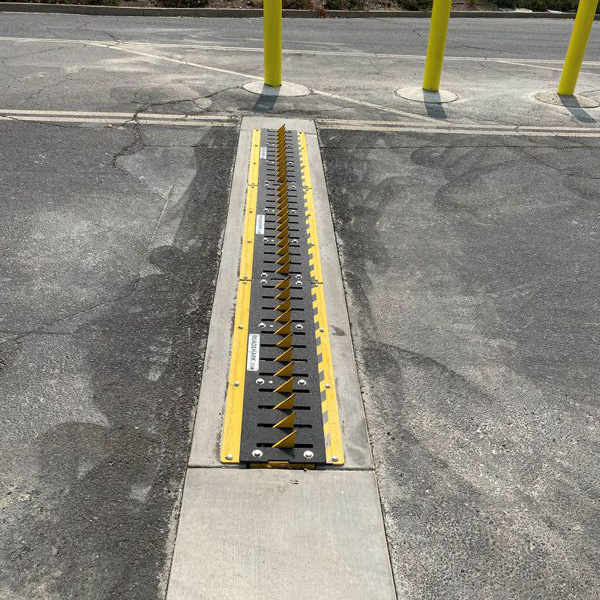
In-ground traffic spikes are embedded directly into the road or pavement, offering a flush, seamless design that minimizes wear and enhances durability. The installation process requires excavation and careful alignment, making them a better fit for permanent or long-term applications such as gated communities, secure facilities, or high-traffic entrances. The recessed design provides a clean aesthetic and eliminates the raised profile, which reduces the risk of vehicle damage and ensures smoother transitions. In-ground systems are particularly well-suited for areas with heavy vehicle use or where spikes need to withstand extreme environmental conditions.
Motorized Traffic Spikes Advantages
Motorized traffic spikes provide significant advantages over manual systems by eliminating the need for physical interaction. They offer greater convenience and security, as the spikes can be controlled remotely or triggered automatically based on access permissions. This automation ensures quicker response times and reduces the risk of user error, particularly in high-traffic or restricted areas. Additionally, motorized systems are often integrated with existing security infrastructure, providing a more comprehensive and efficient access control solution.
Surface-Mount VS In-Ground Traffic Spikes
The key differences between surface-mounted and in-ground traffic spikes lie in their installation and functionality. Surface-mounted spikes are faster and less invasive to install, making them suitable for temporary or semi-permanent applications, while also acting as speed bumps to slow down vehicles. However, their raised profile may require more maintenance over time. In contrast, in-ground spikes provide a flush, durable solution that integrates seamlessly with the roadway, ideal for permanent installations and high-traffic areas, though they involve a more complex and time-intensive installation process. The choice depends on factors like the site's traffic volume, intended permanence, and specific access control needs.
Please note, surface-mount and in-ground traffic spikes are available in both manual or motorized form, however Tiger Teeth Store has organized our traffic spikes into surface-mount, in-ground, and motorized. If you wish to shop surface-mount AND motorized or in-ground AND motorized traffic spikes, please follow the Motorized Traffic Spikes Button.
Surface-Mount Traffic Spikes In-Ground Traffic Spikes Motorized Traffic Spikes
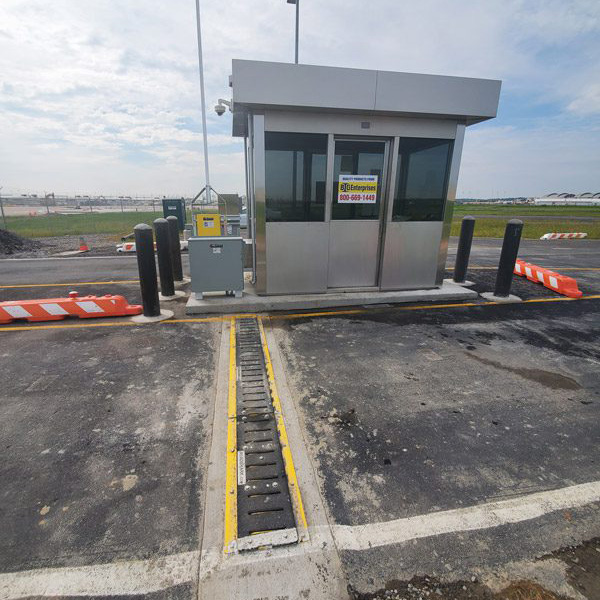
When and Where are Traffic Spikes Used?
Traffic spikes are employed in situations where controlled vehicle access and directional traffic flow are critical. They are commonly used at entry and exit points to prevent unauthorized access, enforce one-way traffic, or enhance security in areas with restricted access. These systems are particularly effective in environments that experience consistent vehicle traffic or require heightened security measures. Traffic spikes are also used to regulate speed, ensuring safe entry and exit in high-traffic zones. Whether for temporary installations at events or permanent solutions in secure facilities, they provide a reliable method for managing vehicle movement.
Common Traffic Spike Applications
- Parking lots and parking garages
- Gated residential communities
- Military bases and government facilities
- Airports and secure transportation hubs
- Toll roads and highway access points
- Corporate campuses and industrial facilities
- Hospitals and emergency service areas
- Event venues and stadiums
- Impound lots and vehicle storage facilities
Traffic Spike Safety Requirements and Considerations
Safe operation of traffic spikes depends on proper installation, alignment, and maintenance. Ensuring the spikes are aligned correctly allows smooth passage for authorized vehicles while preventing damage. Accessories like end bevels, reflective markers, and warning signs improve visibility and safety, while speed limit markers encourage cautious driving. Adhering to manufacturer guidelines during installation and performing regular inspections are essential to maintaining performance and durability. These precautions help maximize both safety and effectiveness.
Traffic Spike Maintenance and Longevity
Proper maintenance is key to ensuring the longevity and reliable performance of traffic spike systems. Regular inspections should be conducted to check for signs of wear, debris buildup, or damage to the spikes, housing, or mechanisms. Cleaning the system and removing debris prevents obstructions that could hinder proper operation. Factors such as heavy traffic, environmental conditions, and improper usage can significantly impact the lifespan of the spikes, making it essential to follow manufacturer guidelines and perform routine upkeep. Adhering to safety protocols, including checking alignment and ensuring all warning signs are visible and intact, helps prevent accidents and ensures the system operates as intended.
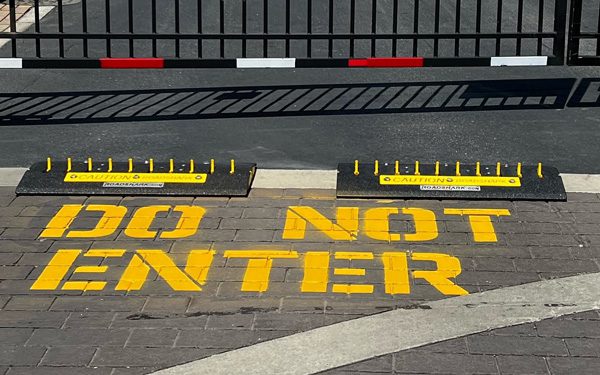
Traffic Spike FAQ's
Do traffic spikes bend or break under heavy loads?
No, traffic spikes are made from high-strength materials designed to withstand significant loads, including heavy-duty vehicles. When installed correctly and maintained regularly, they remain durable and resistant to bending or breaking. Choosing the appropriate load rating for your traffic volume is essential.
Are traffic spikes safe for pedestrians?
Yes, traffic spikes are designed primarily for vehicle control and are generally safe for pedestrians when installed correctly. However, they should be placed in areas where pedestrian traffic is minimal, and warning signs should clearly indicate their presence to avoid accidental contact.
Are traffic spikes loud when vehicles pass over them?
While surface-mounted traffic spikes can produce some noise, particularly at higher speeds, proper installation and maintenance can minimize sound levels. Adding accessories like dampeners or beveled ends can further reduce noise during operation.
Who is responsible for damage caused by traffic spikes?
Responsibility for damage typically falls on the driver if they ignore signage or warnings and misuse the spikes, such as traveling in the restricted direction or at excessive speeds. Preventing faults involves ensuring the spikes are properly installed, regularly maintained, and accompanied by clear warning signs and speed limit markers.
Can traffic spikes be installed on any surface?
Traffic spikes can be installed on most surfaces, including asphalt and concrete. Surface-mounted systems are ideal for quick installations, while in-ground systems require excavation for a flush, permanent finish. Proper site preparation and adherence to installation guidelines are key to ensuring performance and longevity.
Do traffic spikes work in all weather conditions?
Yes, traffic spikes are built to function in various weather conditions, including rain, snow, and heat. However, regular maintenance is critical to ensure that the mechanisms remain free of debris, ice, or excessive dirt, which could hinder performance. Accessories like drainage systems or weather-resistant coatings can further enhance their reliability.
Traffic spike systems are an essential component of access control, offering a reliable and effective way to manage vehicle movement, enforce directional flow, and enhance security. By deterring unauthorized access and maintaining orderly traffic, these systems provide a practical solution for a wide range of environments, from parking lots to high-security facilities. Tiger Teeth traffic spike systems stand out as a cost-effective, durable, and customizable option, designed to meet the unique needs of any property. Whether for temporary use or permanent installations, these systems deliver exceptional performance and peace of mind. Consider Tiger Teeth traffic spikes for your access control needs to achieve a secure and efficient solution.
Shop Traffic Spike Systems
Shop Traffic Spike Parts, Accessories, & Compatible Access Control Systems
If you have any questions about choosing the right traffic spikes for your property, our sales representatives are here to help and provide personalized assistance. Don't hesitate to reach out! Additionally, be sure to explore our resources hub for more informative guides and instructional content to support your access control needs.

